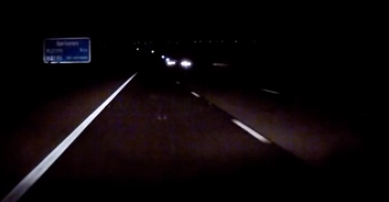.
 Our eyes are made up of cells called rods and cones. Rods work well in the dark, and cones work well in daylight.
Our eyes are made up of cells called rods and cones. Rods work well in the dark, and cones work well in daylight.
The forveal area of the eye (which deals with central focus on vision, such as driving, watching TV etc) has a much higher concentration of cone cells, making our focusing vision good at day but poor at night.
On the other hand our peripheral vision (to the sides, out of focus vision) has a high concentration of rod cells, which work well at night.
So during night, although our peripheral vision may still be good, our forveal vision is severally compromised. The human eye is drawn towards lines, sides and shapes of objects to work out what it is, the eye is also drawn to movement.
Both lines, sides and shapes, along with movement is much harder to work out at night, which is one of the reasons why a greater concentration of accidents occur at night than in the day time.
How to stay safe:
Understand how the dark affects your eyes
Ensure your lights are working correctly, and are clean
Reduce your speed in limited light
